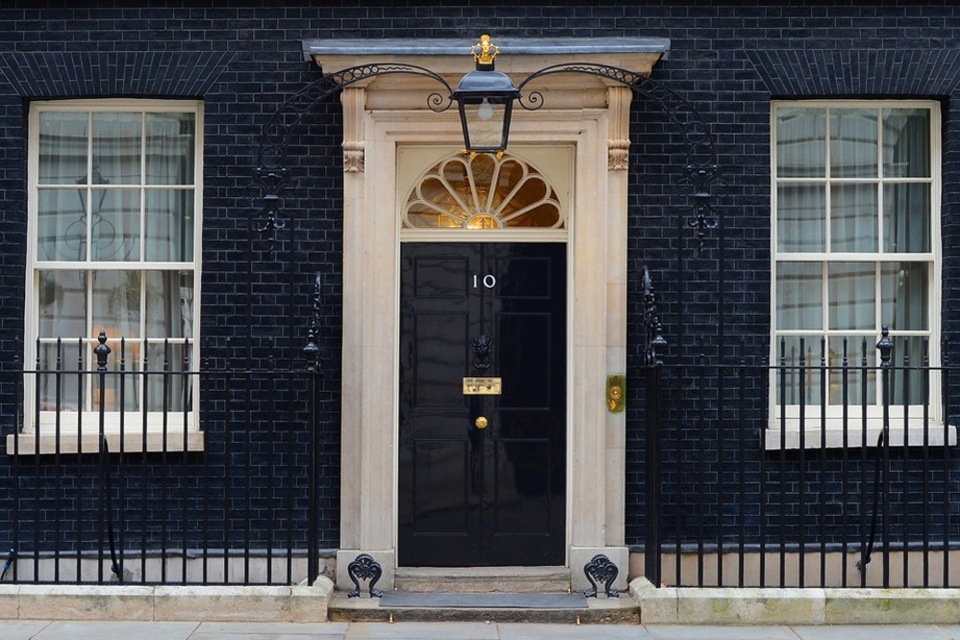- Over 100 sites across England have come forward to be considered for next generation of new towns
- Government on track to create beautiful communities, provide affordable homes, and deliver much needed infrastructure, including schools and nurseries, GP surgeries, and bus routes
- By taking on the blockers, 20,000 homes, along with new schools and health facilities, will move forward following government action, and we will now turn to unblock the remaining 700,000 homes across 350 sites
- Comes as government rolls out major planning reforms to sweep away the blockers and push through its housebuilding agenda as part of the Plan for Change
Hundreds of thousands of working people and families will reap the rewards new towns across Britain, as the Prime Minister paves the way for the largest housebuilding programme since the post-war era.
Visiting a housing development today, the Prime Minister will unveil the government’s plans for the next generation of new towns – well-designed, beautiful communities with affordable housing, GP surgeries, schools and public transport where people will want to live.
Over 100 proposals from across every region in England were submitted, showing local areas and housebuilders’ ambition to get on board to build the next generation of new towns – playing their part in getting Britain building and tackling the worst housing crisis in living memory. Every new town will have the potential to deliver 10,000 homes or more.
Delivering security is central to this government’s Plan for Change, because the least working people deserve when they graft hard is a secure home. That’s why the government is providing much-needed housing in the right places with the right infrastructure, and the New Towns Taskforce has today set clear principles on what the next generation of new towns will deliver: affordable housing, vital infrastructure and access to open green spaces and nature, to transform the lives of working people.
Prime Minister Keir Starmer said:
For so many families, homeownership is a distant dream. After a decade of decline in housebuilding, the impact is a disconnect between working hard and getting on.
This is about more than just bricks and mortar. It’s about the security and stability that owning your own home brings. I know what this means for working people – the roof above our head was everything for our family growing up.
We’ve already made progress in just seven months, unblocking 20,000 stuck homes. But there’s more to do.
We’re urgently using all levers available to build the homes we need so more families can get on the housing ladder. We’re sweeping aside the blockers to get houses built, no longer accepting no as the default answer, and paving the way for the next generation of new towns.
As part of the largest housebuilding programme since the post-war era, our ambitious Plan for Change will transform the lives of working people, once again connecting the basic principle that if you work hard, you should get on.
Deputy Prime Minister and Secretary of State for Housing, Angela Rayner said:
Time and again we are seeing too many new homes stuck or stalled that not only act as a barrier to growth but also has real-world consequences for working people and families who see homeownership as nothing more than a distant dream.
I will not run away from the tough choices to fix the housing crisis we inherited that has left thousands of families on housing waiting lists, allowed homelessness to spiral out of control, and stopped an entire generation from picking up the keys to their first home.
While our vision for the next generation of new towns is setting the stage for a housebuilding revolution in the years to come, urgent action is needed now to build the homes and infrastructure that our local communities are crying out for. That’s why our New Homes Accelerator is working at pace to find solutions and remove blockages in the system, executing long-lasting solutions to get spades in the ground.
Today we are embarking on the next chapter in our Plan for Change to build 1.5 million new homes, deliver the biggest boost in social and affordable housing in a generation, and raise living standards for working people and families across the country.
For far too long, working people have been let down by a decline in housebuilding. That’s why the government is rolling up its sleeves and is taking on the blockers with major reforms to planning regulation to get Britain building.
That work is already underway, with a staggering 20,000 new homes now successfully unblocked by the government’s novel ‘New Homes Accelerator’ programme, which deploys planning expertise to speed up the delivery of housing sites held by unnecessary delays.
Areas that have already benefitted from direct government action include:
- Over 1,000 homes unlocked at Cowley Hill in Liverpool, where an agreement has been reached with the Environment Agency who withdrew its previous objections on both flood risk and biodiversity grounds, subject to planning.
- And at Wolborough in Devon, the Accelerator has worked with Natural England to help accelerate this development, whilst ensuring environmental improvements are secured. On top of the 1,100 homes the site is injecting £1.75 million towards off-site pedestrian and cycle improvements, playing pitches, bus services and a local travel plan.
Housebuilders and local councils have put forward over 350 housing development sites stuck in the system under the previous government – that together could unlock around 700,000 new homes.
Around a quarter of sites submitted are already receiving government attention since the call for evidence closed in October – demonstrating success of the programme, and local ambition to support the government’s 1.5 million homes target.
This goes hand-in-hand with government action to overhaul the planning system, supporting the builders and not the blockers, taking the brakes off economic growth, raising living standards, and making the tough decisions to deliver for working people and families.
This includes:
- Publishing a new growth-focused National Planning Policy Framework, which introduced new mandatory for councils to deliver the right homes in the right places, with a combined total of 370,000 homes a year.
- Introducing the Planning and Infrastructure Bill next month. The Bill will overhaul environmental regulations to no longer accept the failed status quo where bats are more important than trains or newts more important than homes, and remove blockers to fast-track delivery of the homes and infrastructure that local communities need.
To get Britain building now – the government today announces plans to fast stream planning through brokering disagreements between the agencies and expert bodies, which by law must be consulted within the planning process. Bodies including National Highways, Natural England and the Environment Agency will need to bring planners and housebuilders to the table and iron out concerns that have been holding back development.
Responding to sector concerns on pinch points, work stepping up with the Building Safety Regulator to ensure greater timeliness and efficiency when new tall buildings are signed off – to provide more homes for more people.
This work will be bolstered by extra government funding announced today, including:
-
£1 million for government agencies, including National Highways, Natural England and the Environment Agency, to speed up the planning approval of new homes and improve feedback to local authorities and industry where required.
-
£2 million to support the Building Safety Regulator to continue improving the processing for new-build applications.
-
Over £3 million of grants for local councils to bolster planning capacity, alongside direct advice and navigate through some of the more complex issues holding up new development.
Alongside the Accelerator, the government is also supporting local partners through a clearing service to help accelerate the sale of uncontracted and unsold affordable homes, with nearly 300 housebuilders, local councils and registered providers signing up in the first 50 days of its launch.
In December, the government set a clear hierarchy of brownfield first, grey belt second and green belt third. Today, further funding is being injected to drive regeneration and brownfield deliver in the following areas:
-
£20 million to help transform neglected small-scale council-owned sites into new homes, for areas most in need.
-
Nearly £30 million from the Brownfield Infrastructure and Land Fund in Bradford to transform derelict brownfield sites into a vibrant residential area with 1,000 new homes, three community parks, shops, cafés, restaurants, and offices.
-
£1.5 million to support a regeneration programme at Manchester Victoria North, delivering a new district of 15,000 homes with transport links and green spaces.
Getting homes built for working people is a priority and is backed by investment in housing which is increasing to £5 billion for this year, including a top-up of £800 million being injected into the existing Affordable Homes Programme to help deliver tens of thousands of new affordable and social homes across the country.
This is in addition to an extra £100 million of cash to bolster local resources with increased planning fees to cover costs and funding to recruit 300 planning officers, making sure councils have the capacity they need to rubberstamp new homes and infrastructure.






